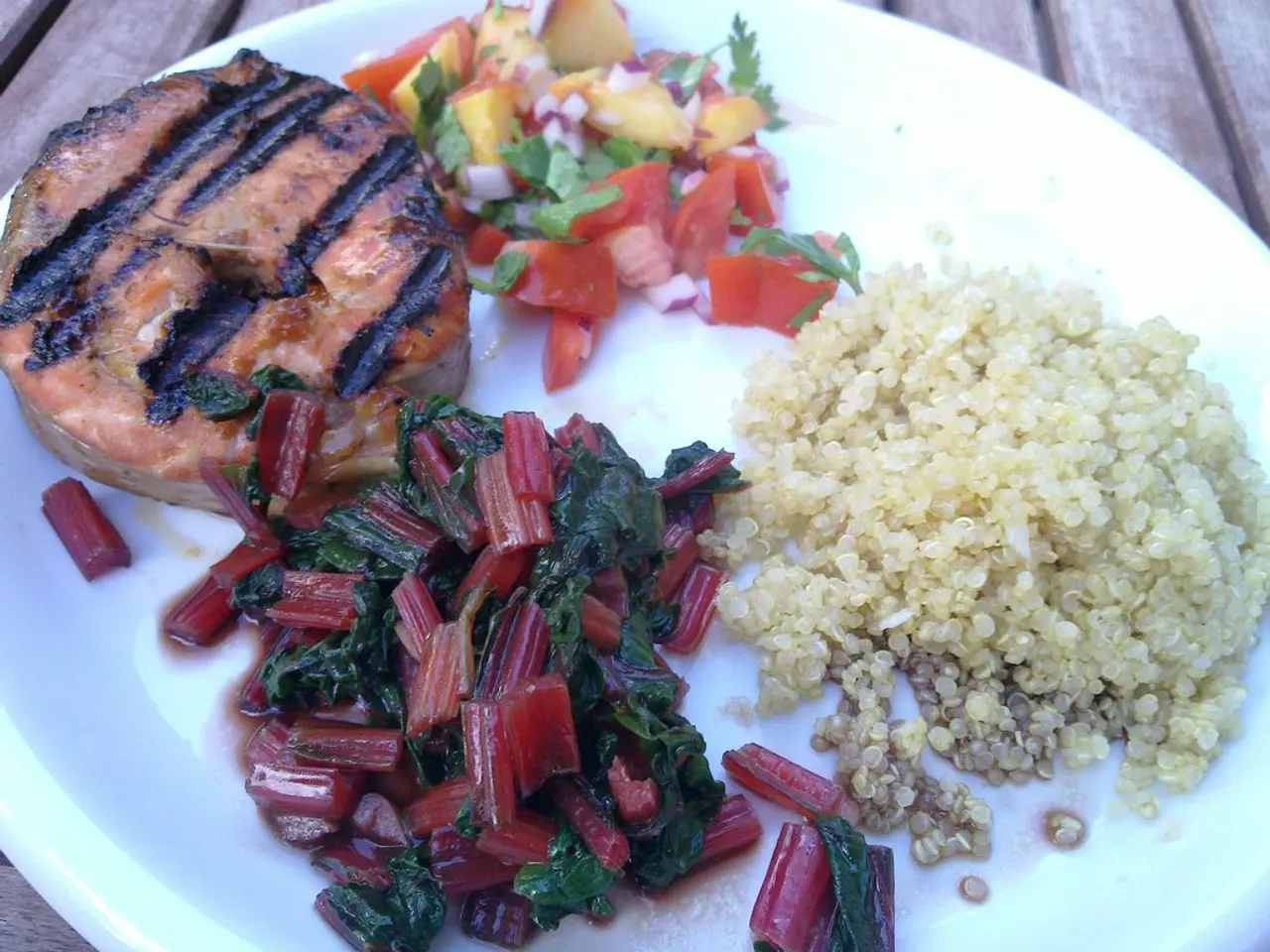Preparing meals with environmental consciousness
In today's world, it's important to consider our impact on the environment while also saving money. CHOICE, an independent consumer organization, provides expert reviews and product testing to help us make informed decisions. Here are some practical tips for making your kitchen and refrigerator more energy-efficient and reducing your carbon emissions.
Optimizing Your Refrigerator
To start, focus on optimizing your refrigerator's temperature, placement, and maintenance. The key actions include:
- Set optimal temperatures: Keep the refrigerator between 35-38°F (1.6-3.3°C) and the freezer between 0-5°F (-18 to -15°C) to avoid overworking the compressor.
- Check and maintain door seals: Replace worn or damaged door gaskets to prevent cool air leakage and energy waste.
- Optimize refrigerator placement: Position it away from heat sources like ovens, dishwashers, heat vents, or direct sunlight, and ensure good airflow around the back for efficient cooling cycles.
- Manage internal space and airflow: Keep the fridge moderately stocked—too empty causes excess energy use, while overfilling blocks air circulation and strains cooling.
- Let hot food cool before storing: Placing hot items inside raises internal temperature and makes the compressor work harder.
- Defrost regularly: For manual defrost freezers, remove frost buildup (when thicker than 1/4 inch) to improve efficiency.
- Clean condenser coils: Periodic coil cleaning (15 minutes) can improve efficiency by up to 30%, especially during hot months.
- Limit door opening frequency: Each opening lets out cold air, increasing compressor workload.
- Consider renewable energy: Powering your fridge with solar panels or solar generators reduces reliance on fossil-fueled electricity, lowering your carbon footprint.
Minimizing Food Waste
Nine percent of Australian adults aren't eating the recommended daily servings of fruit and vegetables. To reduce food waste at home, consider the following:
- Use eco-friendly food wrap: Silicone food covers, beeswax wraps, or glass containers can replace disposable wrap.
- Freeze surplus meals: Making a surplus and freezing it can provide extra meals, reducing the need for takeaway or home delivery.
- Maintain a full fridge: A full fridge is an efficient fridge, but it should not be over-full.
- Buy loose produce: Buying loose produce instead of in plastic bags or packaging can save money.
- Freeze produce: Frozen produce may retain its nutritional value more than vegetables that have been in cold storage for weeks.
- Have at least one meat-free day a week: Switching meat-heavy dishes for veggie-heavy ones can further reduce meat consumption.
- Compost food waste: Composting what can't be eaten can help reduce food waste.
- Store food properly: Storing food properly can extend its life.
Saving Energy in the Kitchen
Kitchen appliances contribute 13% of an average home's power consumption, with refrigerators and freezers accounting for about 8%, and cooking about 5%. Here are some tips to save energy:
- Use energy-efficient kitchen appliances: Shopping for energy-efficient kitchen appliances can help reduce energy use.
- Limit oven usage: Using smaller appliances like air fryers and microwaves instead of a big oven can reduce energy consumption.
- Cook during off-peak hours: Running the dishwasher at night when it's cooler instead of during the day can help reduce energy consumption.
- Opt for cold meals: Opting for cold meals like salads, antipasto platters, rice paper rolls, etc., can help reduce the need to heat up the kitchen.
- Cook on a BBQ: Cooking on a BBQ instead of heating up the kitchen can help minimize air conditioner usage.
Supporting CHOICE
CHOICE is funded by members who value expert reviews and independent product testing. The CHOICE Community forum allows consumers to share thoughts and ask questions. CHOICE does not take ads or sponsorship.
By implementing these practices, you can reduce energy consumption and emissions, save money, and benefit the environment. Happy sustainable cooking!
- To maintain sustainable living, consider optimizing your fridge by setting optimal temperatures, checking and maintaining door seals, optimizing its placement, managing internal space, letting hot food cool before storing, defrosting regularly, cleaning condenser coils, limiting door opening frequency, and even powering it with renewable energy.
- In addition to energy-efficient kitchen appliances, minimizing food waste at home can be achieved by using eco-friendly food wrap, freezing surplus meals, maintaining a full fridge, buying loose produce, freezing produce, having at least one meat-free day a week, composting food waste, and storing food properly.
- Reducing energy consumption in the kitchen can also be achieved by limiting oven usage, cooking during off-peak hours, opting for cold meals, cooking on a BBQ, and supporting an organization like CHOICE, which provides expert reviews and product testing to help make informed choices.
- Adopting sustainable practices in food-and-drink and home-and-garden can have significant impacts on protecting our environment, saving money, and promoting a healthy lifestyle. Such changes might include reducing food waste, improving food safety, and focusing on energy efficiency.





